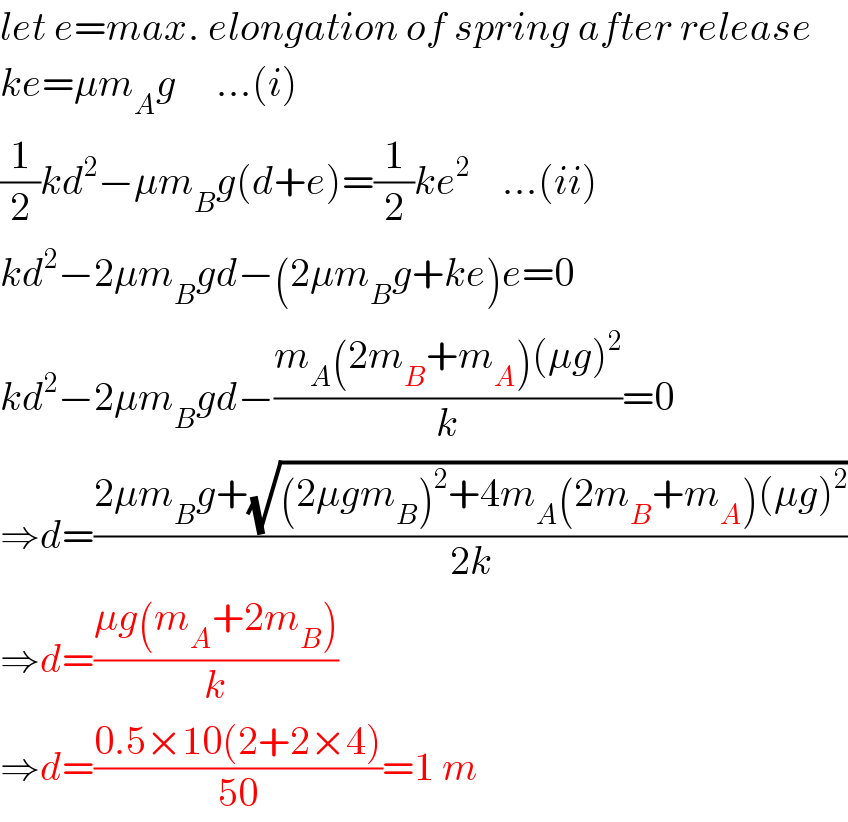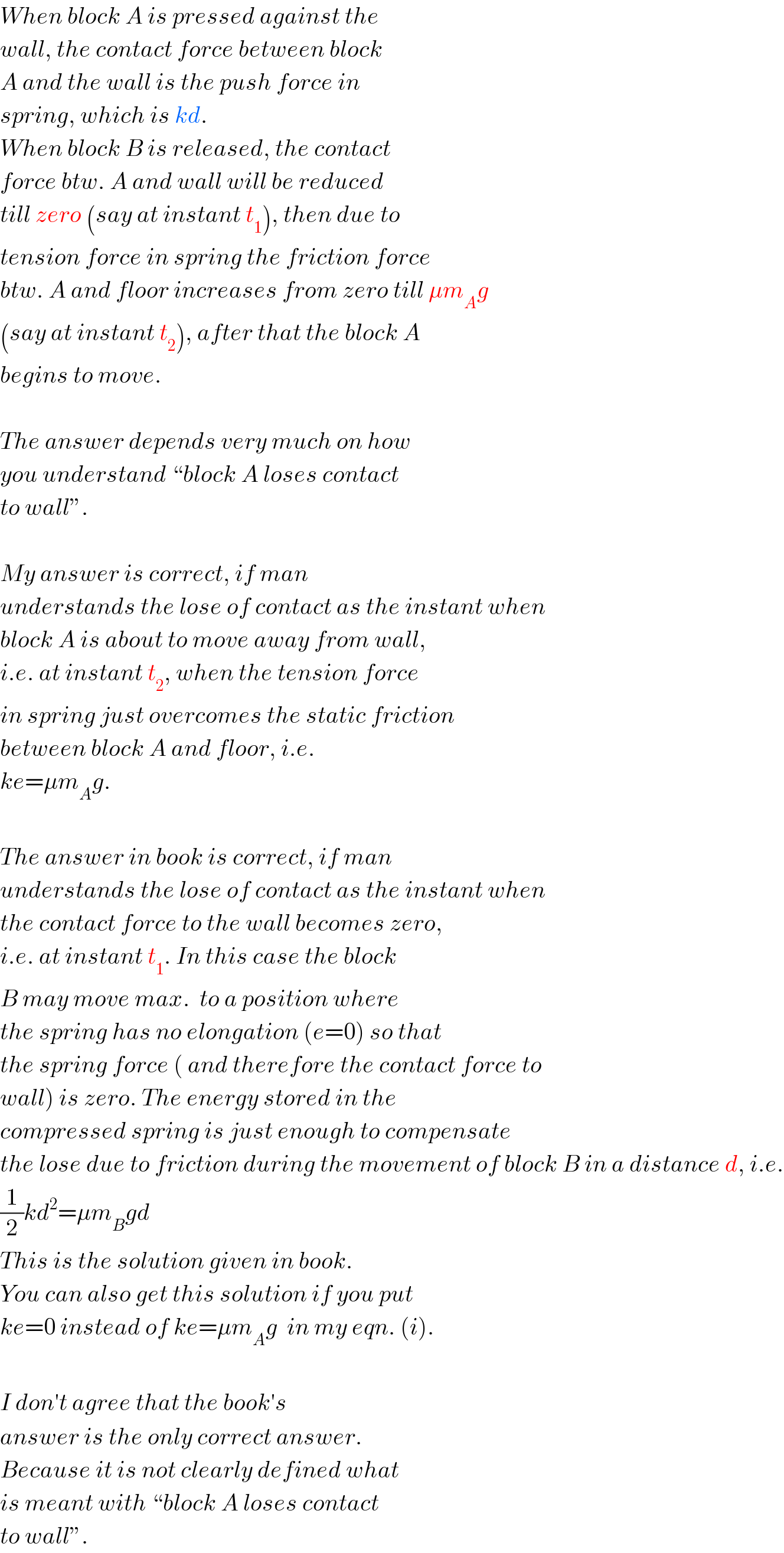
Question and Answers Forum
Question Number 27899 by Tinkutara last updated on 16/Jan/18

Answered by mrW2 last updated on 17/Jan/18

Commented by Tinkutara last updated on 16/Jan/18

Commented by Tinkutara last updated on 16/Jan/18
This is the solution in book. Can you please explain this? And why your method is wrong? This question was integer type so they approximated it to 1 m.
Commented by mrW2 last updated on 17/Jan/18

Commented by Tinkutara last updated on 17/Jan/18
Thank you very much Sir! I got the answer.
Answered by ajfour last updated on 17/Jan/18

Commented by Tinkutara last updated on 17/Jan/18
Thank you very much Sir! I got the answer.
